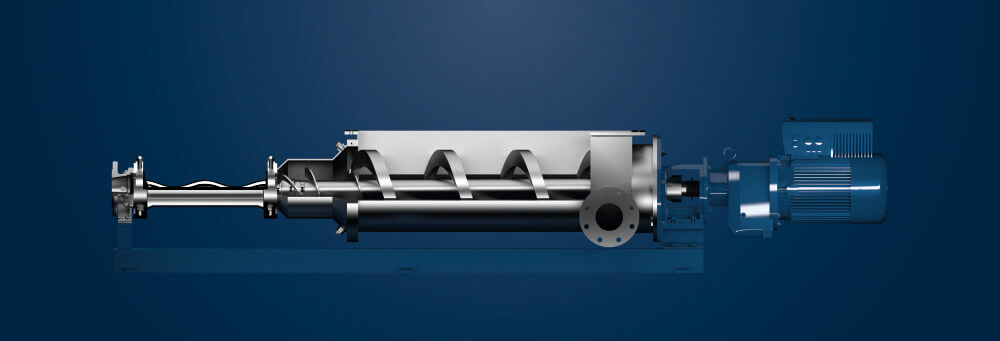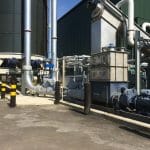By Lesley Eaton, Business Development and Marketing Manager, SEEPEX
Energy generation from the anaerobic digestion of sewage sludge has reached 888 GWh, according to the 2016 Digest of UK Energy Statistics – an increase of over 25 per cent since 2011. Yet over the same period the installed theoretical MWe capacity has grown by just nine per cent. How has the energy generated increased so dramatically and is the trend for efficiency improvements set to continue?
One of the biggest changes is the use of high temperature heat treatment, of sludge. This makes the sludge more biodegradable and enables the loading rates to the anaerobic digesters to be doubled, delivering a higher gas yield. A further benefit is that the final sludge from the digester is pathogen free and can be easily dewatered, resulting in a more valuable final product for land application.
Currently, most sewage sludge is treated by water authorities in their own large, centralised treatment centres, which take dewatered sludge from their smaller satellite treatment works. Raw sewage can constitute up to 99 per cent water and the satellite sewage treatment processes remove this water and thicken the sludge before dewatering to a dry solids content (ds%) of between 18-35 per cent. Dewatering reduces the sludge volume and in turn the transport costs of transfer to the larger treatment centres.
However, the trend for water companies to treat only their own sludge is set to change as a result of the Water 2020 report, published by the regulator Ofwat. The regulator hopes to encourage markets between operators in order to move sludge from a company where it’s expensive to treat, to one that is cheaper. Ofwat modelling suggests that if its proposed changes are implemented, around 30 per cent of all sludge could move between different water companies.
While process optimisation, economies of scale and deregulation will all play a part in the continued increase in energy generation by the water industry, it is important not to overlook the importance of correct equipment selection. Pumps in particular are vital to the water sector’s continued success and selecting the right pump for the job will give the optimum return on investment. Minimising the energy use of equipment is desirable, PC pumps compare well in this respect to other pump technologies, with their ability to maintain flow, even with varying pressures and variable sludge viscosities which is specifically important when feeding heat exchangers to ensure the most efficient heat transfer for heating the sludge. Tailor-made packages often provide the best solution – integrating pumps with complementary equipment, such as special live bottom silos, boundary layer injection systems and back-mixing technology, together with intelligent control systems, will improve reliability, performance and cost efficiency. Sludge cake pumps are large so it is vital that they are efficient in use and have accessible wearing parts for ease of maintenance when required.
New facilities optimised by Anglian Water
Anglian Water has installed sludge reception centres and advanced energy generation using thermal hydrolysis at three locations. They selected SEEPEX progressive cavity (PC) pumps as they can handle both low and high viscosity products, can pump sludge with ds% up to 45 per cent, and are not hindered by solid particles. In addition, they have good discharge pressure capabilities that enable long distance pumping, and boast non-pulsating flow characteristics. Open hopper pumps for high solids transfer and liquid transfer pumps also formed part of the package.
A visit to an existing sludge treatment plant demonstrated how removing conveyors in parts of the process could be achieved by using customised pumps fitted directly to silo outlets, which could back-mix sludge cake with dilution liquid to the required ds%. Integrated controls link the liquid addition and back-mixing silo pumps to ensure optimised mixing. As well as lower capital costs, operating costs were reduced by constantly injecting small amounts of liquid to the pump outlet, reducing friction losses and operating pressure and extending the service intervals.
Thames Water upgrades existing technology
Thames Water STW at Reading aimed to reduce sludge transport costs by increasing the ds% of dewatered sludge from 22 to 25 per cent. However, the piston pumps which transferred the sludge were a limitation due to frequent maintenance requirements and the high pressures generated, as well as their high operating and maintenance costs and strongly pulsating flow. Furthermore, they had hydraulic drives and drew absorbed power of 31 kW.
In comparison, progressive cavity pumps result in low pulsation that generates lower pressure in the pipework, and can be further reduced by boundary layer injection. PC pumps have lower operating and maintenance costs and in this case drew absorbed power of 18 kW – a reduction of 40 per cent.
Thames Water replaced the piston pumps with SEEPEX PC pumps. SEEPEX project managed the installation, working with Thames Water’s approved contractors to deliver a turnkey system. The new pumps transfer higher ds% sludge with a lower energy demand, also reducing the system’s pressure rating, enabling de-rating of pipework and valves.
The pumps have been in use for over two years and have required no maintenance interventions, delivering a hat trick of cost reductions: lower sludge disposal costs, lower energy use and reduced maintenance costs.









